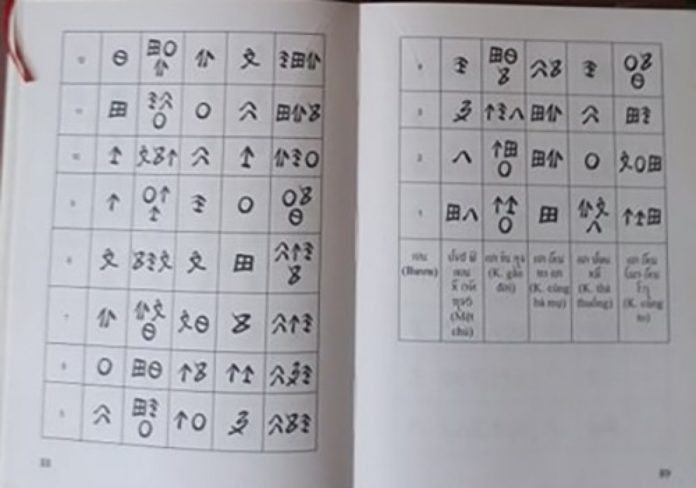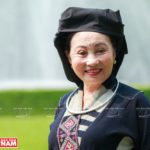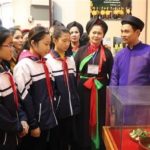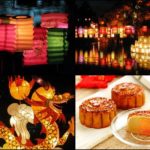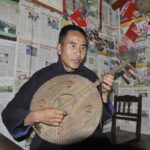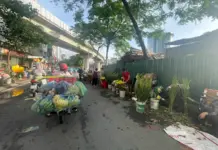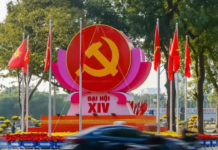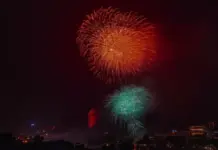The Thai calendar tracks changes of the moon. A lunar cycle is a monthly cycle. Old Thai documents and folk songs associate certain months with different kinds of weather. January has day-long drizzles while February has scattered rain. March sees water flooding the wharf. In May it rains less. Junehas thunderstorms and July has strong winds.
People time their crops to the weather. Lo Van Chung of Chieng Le ward has studied the Thai calendar for years. He said “In the past Thai people waited until they saw ripe fruits in the forest to plant their rice crop. Some Thai villages still have people who are able to read the old calendar to determine good days to organize important events.”
Every Thai village has a shaman who has some old horoscope books and is able to determine good days on the Thai lunar calendar. Thai folk songs talk about the lunar cycle. On the first day of the month, the moon hatches. On the second day, it looks like a young tamarind fruit. On the third day, it tilts. The moon gets round gradually from the 10th to the 16th day. The Thai calendar also has 10 stems and 12 branches or zodiac animals like the more popular solar and lunar calendars.
“Thai people often look at the moon to determine the weather. Experienced people can forecast rain and wind. They know that when ants make their nests in low areas, there will be strong wind. If they relocate to higher areas, there will be less storms and wind,” said 95-year-old Lo Xuong Hac.
Ca Chung, a former official with the Son La provincial Department of Science and Technology, computerized the Thai calendar in 2005, and wrote software to compare the Thai calendar, the solar calendar, and the lunar calendar of the Kinh from 1800 to 2199.
“The Thai calendar has been computerized. The Vietnam Folklore Association has printed a 7-volume calendar which covers 400 years. I hope many people will find it useful,” said Ca Chung.
The Thai lunar calendar is considered a cultural artifact which needs preservation and promotion.

